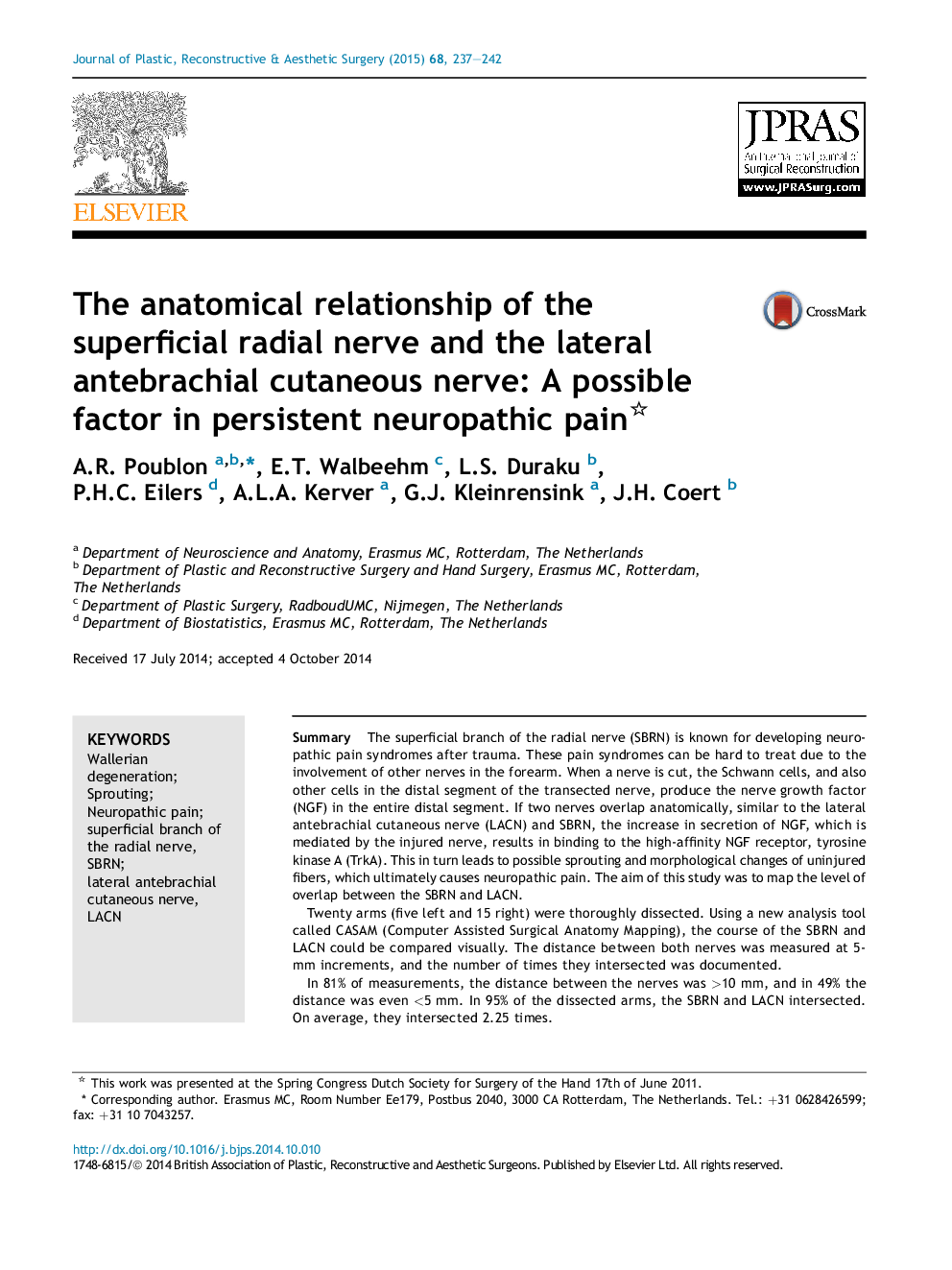| Article ID | Journal | Published Year | Pages | File Type |
|---|---|---|---|---|
| 6214562 | Journal of Plastic, Reconstructive & Aesthetic Surgery | 2015 | 6 Pages |
SummaryThe superficial branch of the radial nerve (SBRN) is known for developing neuropathic pain syndromes after trauma. These pain syndromes can be hard to treat due to the involvement of other nerves in the forearm. When a nerve is cut, the Schwann cells, and also other cells in the distal segment of the transected nerve, produce the nerve growth factor (NGF) in the entire distal segment. If two nerves overlap anatomically, similar to the lateral antebrachial cutaneous nerve (LACN) and SBRN, the increase in secretion of NGF, which is mediated by the injured nerve, results in binding to the high-affinity NGF receptor, tyrosine kinase A (TrkA). This in turn leads to possible sprouting and morphological changes of uninjured fibers, which ultimately causes neuropathic pain. The aim of this study was to map the level of overlap between the SBRN and LACN.Twenty arms (five left and 15 right) were thoroughly dissected. Using a new analysis tool called CASAM (Computer Assisted Surgical Anatomy Mapping), the course of the SBRN and LACN could be compared visually. The distance between both nerves was measured at 5-mm increments, and the number of times they intersected was documented.In 81% of measurements, the distance between the nerves was >10Â mm, and in 49% the distance was even <5Â mm. In 95% of the dissected arms, the SBRN and LACN intersected. On average, they intersected 2.25 times.The close (anatomical) relationship between the LACN and the SBRN can be seen as a factor in the explanation of persistent neuropathic pain in patients with traumatic or iatrogenic lesion of the SBRN or the LACN.
